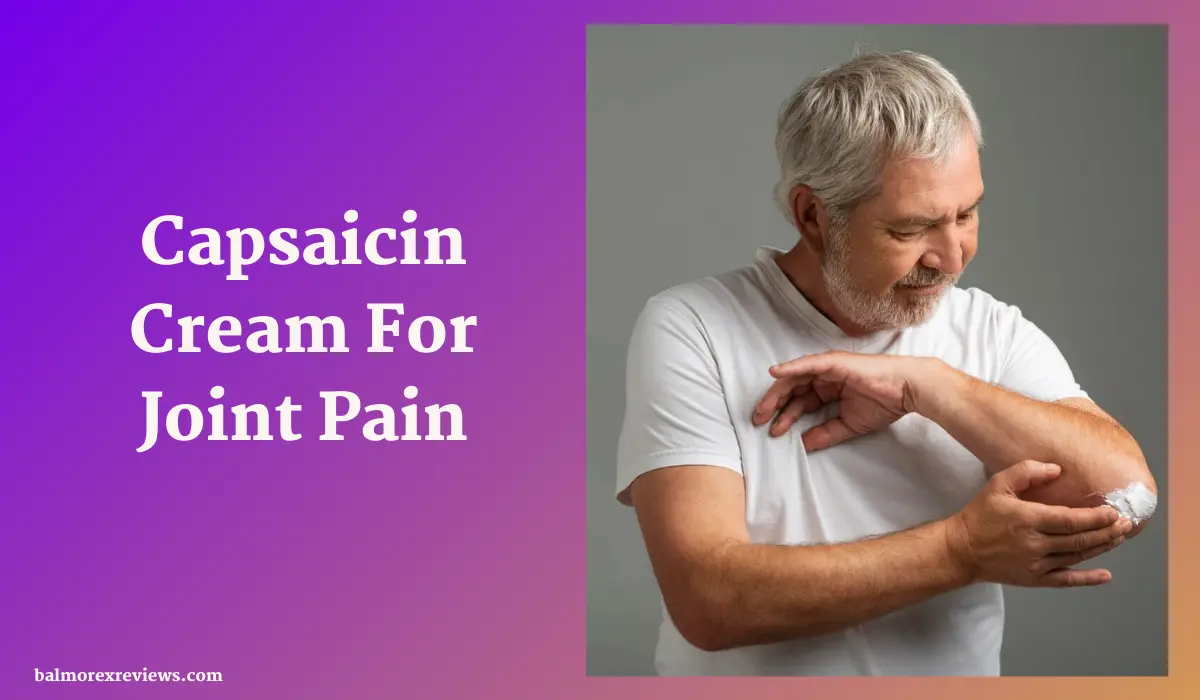Capsaicin Cream For Joint Pain: Its Uses, Benefits, And Risk Factors!
Capsaicin cream is a topical treatment utilized for joint pain relief, derived from chili peppers. Its application can alleviate discomfort by desensitizing pain receptors. Benefits include localized pain reduction without systemic side effects common with oral medications. However, potential risks such as skin irritation or allergic reactions exist. Understanding its uses, benefits, and risks is essential for informed application.

Disclaimer: This article has been generated with the assistance of AI tools. While our research team has fact-checked the content, readers should independently verify information for accuracy and reliability.
Today, I decided to delve into the topic of using capsaicin cream for joint pain relief. As someone who suffers from occasional bouts of arthritis, I’m always on the lookout for effective and natural remedies to alleviate discomfort. Capsaicin, the active compound found in chili peppers, has been gaining popularity as a topical analgesic, and I wanted to explore its potential benefits and proper usage.
Capsaicin creams and ointments have been used for centuries in various traditional medicinal practices to relieve pain and inflammation. In recent years, they have gained traction in the mainstream medical community as a potential treatment option for various types of pain, including joint pain associated with conditions like osteoarthritis and rheumatoid arthritis.
Can Capsaicin Cream Help Joint Pain?

Yes, capsaicin creams and ointments have been found to effectively relieve joint pain associated with conditions like osteoarthritis and rheumatoid arthritis. The active compound capsaicin, derived from chili peppers, works by desensitizing nerve endings and reducing the transmission of pain signals. Numerous studies have demonstrated its analgesic and anti-inflammatory properties when applied topically to affected joints.
Why Should You Use It?
There are several compelling reasons to consider using capsaicin cream for joint pain:
- Natural and non-addictive: Unlike many pharmaceutical painkillers, capsaicin is a natural compound derived from chili peppers, making it a safer alternative for long-term use without the risk of addiction or severe side effects.
- Targeted relief: Capsaicin creams are applied directly to the affected area, providing localized pain relief without systemic absorption or potential side effects associated with oral medications.
- Potential anti-inflammatory effects: In addition to its analgesic properties, capsaicin has been shown to possess anti-inflammatory properties, which can be beneficial for conditions like arthritis where inflammation plays a significant role.
How Is Capsaicin Used?
Capsaicin creams and ointments are typically applied topically to the affected joint area. A thin layer of the cream is gently massaged into the skin until fully absorbed. It’s essential to follow the instructions provided by the manufacturer or healthcare provider regarding the appropriate concentration, amount, and frequency of application.
Care should be taken to avoid contact with eyes, nose, mouth, or other mucous membranes, as capsaicin can cause severe burning and irritation. It’s also recommended to wash hands thoroughly after application and avoid applying to broken or irritated skin. Proper usage and precautions are crucial for the safe and effective use of capsaicin creams for joint pain relief.
Benefits of Capsaicin Cream
- Pain relief: Numerous studies have demonstrated the efficacy of capsaicin in reducing pain associated with various conditions, including osteoarthritis, rheumatoid arthritis, and neuropathic pain.
- Improved mobility: By alleviating joint pain, capsaicin creams can potentially improve mobility and range of motion, allowing individuals to engage in daily activities more comfortably.
- Reduced reliance on oral medications: For some individuals, capsaicin creams may serve as an alternative or complementary treatment option, reducing the need for oral painkillers and potentially minimizing the risk of adverse effects associated with long-term use of certain medications.
Dosage Of Capsaicin Cream
The dosage and frequency of application can vary depending on the specific formulation and the severity of the condition being treated. It’s crucial to follow the instructions provided by the manufacturer or healthcare provider. Generally, capsaicin creams are applied two to four times daily, with a recommended concentration ranging from 0.025% to 0.075%.
Precautions
While capsaicin creams are generally considered safe when used as directed, there are a few precautions to keep in mind:
- Avoid contact with eyes and mucous membranes: Capsaicin can cause severe burning and irritation if it comes into contact with eyes, nose, or other mucous membranes. Use caution when applying the cream and wash your hands thoroughly after application.
- Use with caution on broken or irritated skin: Capsaicin may cause further irritation if applied to broken or damaged skin.
Side Effects of Capsaicin Cream
While generally well-tolerated, some individuals may experience side effects when using capsaicin creams, including:
- Skin irritation or burning sensation: This is one of the most common side effects, particularly during the initial applications. The sensation typically subsides with continued use as the nerve endings become desensitized.
- Coughing or sneezing: In rare cases, some individuals may experience coughing or sneezing if the cream is applied too close to the nose or mouth.
- Redness or rash: Some people may develop mild redness or a rash at the application site, which usually resolves on its own or with discontinuation of use.
Final Note
After exploring the potential benefits and proper usage of capsaicin creams, I’m convinced that this natural remedy could be a valuable addition to my joint pain management regimen. While it’s important to exercise caution and follow the recommended precautions, the potential for effective pain relief without the risks associated with oral medications makes capsaicin creams an attractive option worth considering.
Of course, it’s always advisable to consult with a healthcare professional before starting any new treatment, especially if you have underlying medical conditions or are taking other medications. With their guidance and proper usage, capsaicin creams may provide a safe and natural way to alleviate joint pain and improve overall quality of life.
References
Natalie Smith
Natalie Smith is a highly respected Osteopath with over 15 years of experience in treating a wide range of musculoskeletal conditions. She graduated from the British School of Osteopathy with a Master’s degree in Osteopathic Medicine and is a registered member of the General Osteopathic Council. Natalie’s expertise spans the diagnosis and treatment of issues affecting the muscles, bones, joints, and connective tissues. She utilizes a holistic, patient-centered approach, combining manual techniques such as spinal manipulation, soft tissue massage, and joint mobilization to alleviate pain and restore optimal function. Passionate about educating her patients, Natalie frequently speaks at local health workshops and has authored articles on osteopathic care for several respected medical journals. Her commitment to ongoing professional development ensures she remains at the forefront of the latest advancements in the field of osteopathy.
